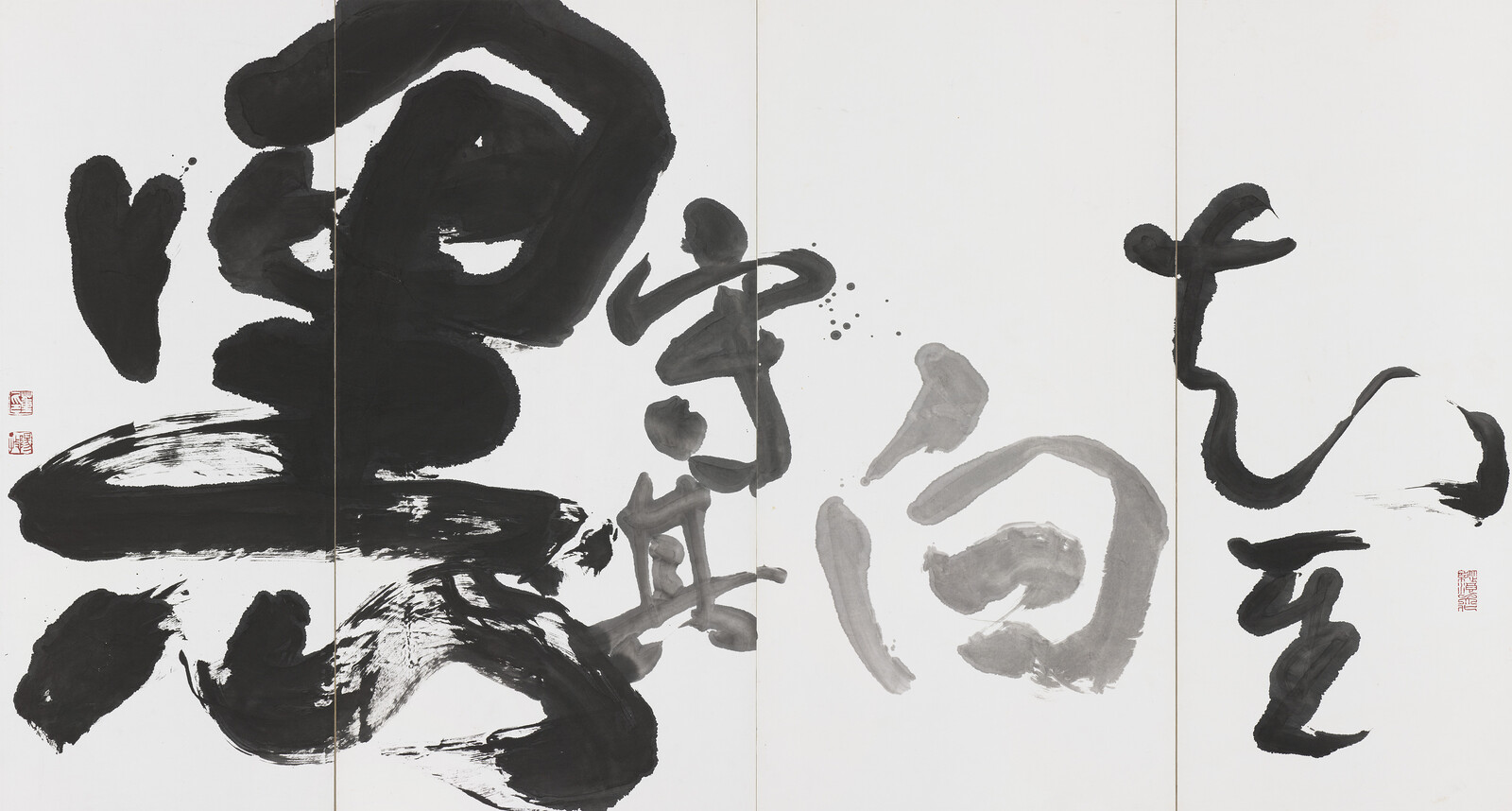Moving Ink
December 14, 2019–March 8, 2020
No. 181 Zhongshan N. Road Sec. 3
Taipei 10461
Taiwan
The grand opening of Moving Ink: Tong Yang-Tze officially takes place on Saturday, December 14 at Taipei Fine Arts Museum (TFAM). This solo exhibition of renowned calligraphic artist Tong Yang-Tze unveils works from the 1960s to the present day, revealing the evolution of her creative expression and stylistic breakthroughs in various periods of her long career. Occupying the museum’s ground floor and part of the second floor, Moving Ink is the artist’s largest chronological retrospective solo exhibition in recent years, featuring around 94 works. Highlights include her iconic grand-scale textual artworks, as well as early oil paintings made during her stay in the United States, exhibited for the first time in Taiwan.
Born in Shanghai in 1942, Tong Yang-Tze moved to Taiwan at the age of 10. Attending the fine art department at National Taiwan Normal University, she learned from such calligraphers and artists as Chang Ku-Nien, Ting Nien-Hsien, Tai Ching-Nung, Chang Lung-Yan and Fu Shen. After graduating, she earned a master’s degree from the University of Massachusetts, Amherst in the United States, majoring in oil painting with a minor in ceramic art (1966-68). In 1970 she moved to New York City, working as a graphic designer and winning the Cover Design Award at the US National Design Exhibition. Participating in calligraphy and painting exhibitions in both the US and Taiwan during this period, she eventually resettled in Taiwan in 1977, formally specializing in calligraphic art.
During the 1960s and 1970s, Tong began her studies of calligraphy by imitating classical works, favoring the standard script of Yan Zhenqing and the Wei Dynasty Stele, and later Su Dongpo and Huang Tingjian. Assimilating compositional aspects of Western painting, she has created an aesthetic that blends modern art and traditional calligraphy. Her powerful, uninhibited brushstrokes and the structural arrangements of her characters are in a class of their own, with distinctive writing and interpretation that conjure a new mode of “textual art.”
In the 1970s Tong began to experiment with her calligraphy, mixing different scripts and integrating traditional brush-and-ink media with contemporary art composition. By the 1990s, she had developed a unique aesthetic merging the running and cursive scripts and bridging the divide between calligraphy and painting. The longest work in this exhibition The Nine Songs (1993), stretching 14 meters in width, was created in the 90s as well. It was acquired by Taipei Fine Arts Museum as part of its permanent collection in 1998 and now on public display for the first time in two decades.
For about 15 years, from 2002 to 2018, Tong Yang-Tze has created numerous grand-scale works based on her highly recognizable style, challenging the limits of calligraphic expression. The 15 grand-scale works in the exhibition also push the envelope in terms of how viewers experience calligraphy. As the exhibition’s curator Chang Fang-Wei explains, “Grand-scale texts challenge both the artist and the viewer in ways that are completely different from those of traditional calligraphy. The artist must go from writing at a desk to moving through a surrounding space. The large expanse of the work also forces visitors to engage in an environmental form of viewing that alters the relationship between work and viewer.” The curator reminds the public that they must personally experience these works first-hand to sense the impact and emotional power that printed or digital reproductions fail to convey.
Moving Ink: Tong Yang-Tze is chronologically structured to reveal the evolution of the artist’s creative process, while also presenting major examples of the developmental process of modern calligraphy as a whole. TFAM Director Ping Lin remarks, “Documenting art history has always been one of Taipei Fine Arts Museum’s highest priorities. Tong Yang-Tze is one of Taiwan’s most iconic calligraphic artists, and the arc of her career is very illustrative of the development of modern Taiwanese calligraphy.”
Many of the works Tong Yang-Tze has done over the decades are already highly familiar to the Taiwanese public—for instance, the “Taipei Main Station” inscription in the station’s central hall, the official logos for Cloud Gate Theater and Kingstone Bookstore, the Entry and Exit signs for immigration services at Taoyuan International Airport, and the cover title texts of the Pai Hsien-Yung novels Crystal Boys and Taipei People. As one of the most prominent proponents of making brush-and-ink writing part of everyday life, her many cross-disciplinary collaborations involving fashion, design, theater and popular culture have endowed calligraphic art with vitality, keeping it in synch with the pulse of the era. Tong Yang-Tze herself states that she has promoted textual art to give people a fresh awareness of its role in their own culture. She also hopes to encourage people in the internet age to pick up the traditional brush and write, to pass on culture through their own calligraphy and influence others.



